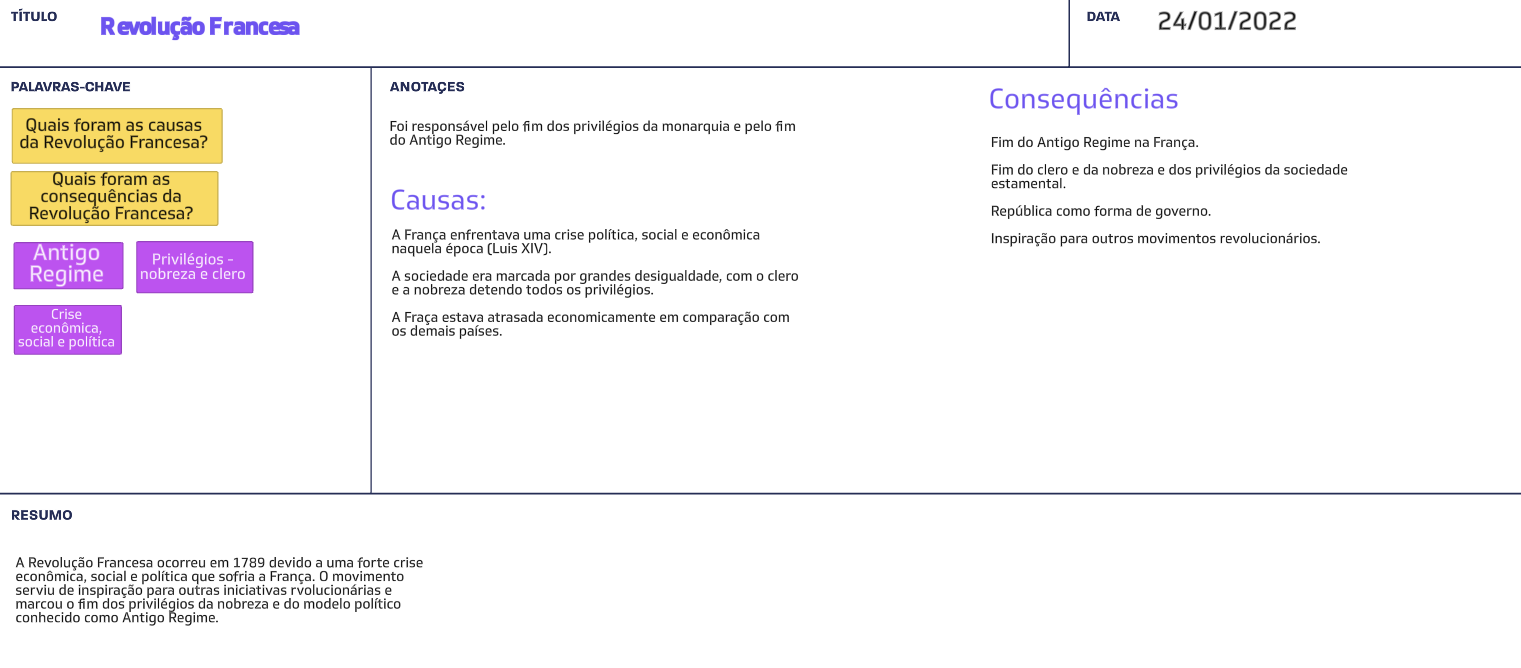Cornell: an efficient method for taking notes in class

Strytegy
February 17, 2022
Did you know that there is a super efficient method for taking notes in class? Meet the Cornell Notes System and take your study techniques to the next level!

Usually, each person has their own way of taking notes during a lecture. Some use keywords, others just write in plain text, others are more visual and use mental maps, symbols and arrows. But did you know there is a method to make your notes more efficiently?
In 1950, professor Walter Pauk from Cornell University created a different way to take notes, with the goal of stimulating the brain in various ways to facilitate studying and retaining information. When we put it like this, it might seem like the method is complex and hard to learn, but actually one of its main advantages is simplicity.
In the Cornell system, you divide the page into 4 different sections: one for the title (which is optional), one for the notes, one for keywords, comments and questions, and a last one for the summary. Each part has a specific purpose to help in the learning process and knowledge retention.

Title
The title purpose is just for organizing. You can identify the name of the subject you are studying in that moment, or the main topic of the class. The title is optional.
Notes
This is the main area of the page, where you will write what the professor is saying, writing on the board or showing on slides. The idea is keep the notes short and concise to facilitate the studying process later. Try writing with short sentences, using symbols, abbreviations, diagrams, or whatever else suits your style.
Cues
In this area, you should write key points that will help you study later. You can write down some comments, keywords or questions about the subject. When you are reviewing your notes, you can cover the main notes section and use these topics to test yourself and check if you retained the main topics of what was given in class.
Summary
After class, use this last section to create a brief summary of everything you have learned. This might just be the hardest part, but summarizing is a very important part of the learning process. You can’t summarize something unless you have learned it and can identify the main topics.
Filling out each one of these sections, you stimulate your brain to think about the content in different ways. First you take notes as usual in the main area, then you analyse what you wrote to identify the main topics in the cue section, and finally summarize what you learned in the summary area.
As we said, one of the main advantages of this method is simplicity. To use the Cornell system, you just need a pen and a sheet of paper. Start by dividing the sheet in three sections vertically: a small section at the top for the title, a bigger section in the middle for your notes, and a medium sized one at the bottom for the summary. Then, divide the middle section into two columns: a smaller one on the left for the cue section and a larger one on the right for the main notes. And that is it! You can start taking your notes. Simple, right?
And if you want to make things even easier or you prefer taking your notes on the computer instead of paper, you can use a Cornell Note System free template in Strytegy, which comes with all the sections created for you. All you need to do is create a free account and start taking notes!
